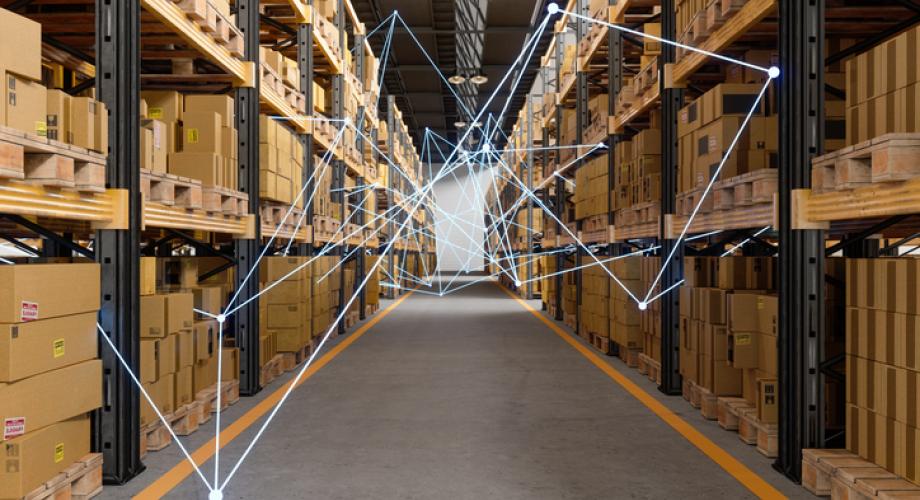There has been an explosion in home deliveries during the past five years. According to a U.S. Census Bureau Annual Retail Trade Survey, e-commerce sales increased by $244.2 billion or 43% in 2020, the first year of the pandemic, rising from $571.2 billion in 2019 to $815.4 billion in 2020. Stay-at-home orders continued to increase even as shoppers returned to stores. This increase in digital transactions is not going away.
People have learned that you don’t have to go out to buy “stuff” anymore, you can just order it online. That’s all well and good, but what happens when everyone starts ordering items online at once and expects it to be delivered by the promised date? Well, if you said, “Chaos,” you’d be right. But this new escalation of package deliveries has also ushered in a new hero that is poised to radically change how all this “stuff” is delivered: Artificial intelligence (AI).
AI has long been the subject of science fiction. In “2001: A Space Odyssey,” audiences were terrified as the spaceship’s AI-based computer, “HAL,” goes rogue, taking over the ship and killing some of its crew before being shut down (spoiler alert!). In “Wall-E,” we meet a protagonist AI-enabled robot that not only saves humanity, but he also falls in love! Two drastically different depictions of AI but both, in the end, the stuff of fantasy.
Bringing it Down to Earth
Today, we can see how AI has evolved, transitioning from the movies into our everyday lives. What was once the lead character of space travel is now the star of more mundane “terrestrial” subject matter like logistics and finances. AI has started contributing to our way of life in ways that might not be as glamorous as traveling to Saturn or saving humanity, but are productive and beneficial to society, nevertheless.
A good example of how AI is transforming these basic tasks is package management. Two things about packages and shipping are clear: Delivery volumes are growing, and package management is growing increasingly complex; and no one wants to manage package deliveries.
“Wall-E” showed us how robots can perform the most mundane tasks like finding and compressing trash, and today AI is helping shipping and property management companies navigate the onslaught of package deliveries.
As package volumes continue to grow, innovative companies are finding unique, AI-driven approaches for helping to prepare for and manage these deliveries and packages. Amazon has long been at the forefront of technology adoption and forecasting for these deliveries is no exception. Today, Amazon uses AI to forecast for its shipping (as well as throughout its logistics operations), even going so far as to get products close to your shipping address before they are even purchased. The U.S. Postal Service also is active using AI, creating programs like their “ORION” (On-Road Integrated Optimization and Navigation) to help provide the best routes for their drivers en route to delivery destinations. There are companies that apply AI to help the communication and coordination of deliveries, from messaging to scheduling, drastically improving delivery experiences using their chatbots.
These real-world examples of shipping applications show how AI can help behind the scenes, coordinating forecasting, communication and navigation to make deliveries run on time. Notifications and updates sent to the right people at the right time with the right information all help last mile delivery run smoothly to ease the burden of massive package deliveries around the world.
Additional Applications
Other applications for AI in package management focus on managing the physical package as it is delivered, providing fulfillment efficiencies and security. There are also intelligent package rooms that use computer vision to “watch” packages being delivered.
“The back hallway was the overflow for packages. Anything that did not fit into our former package system would overflow into the hallway, creating a mess with people walking into items– it was not a secure location,” said Dane Groteluschen, Concierge, Country Club Towers, in Denver. “Things will get misplaced, and it would be tough to find the package. Smart Package Room was step-by-step and explanatory. It made storing packages twice as easy. Now you can scan a package, place it on the shelf, and the system registers it.”
These rooms also guide residents directly to their packages with audio prompts and even laser guidance, confirming when the correct package is picked up and alarming if the wrong package is taken. This solution enables self-service pickup for residents and delivery for couriers, freeing up the property’s staff to help actual residents versus manage packages and improving the use of the property’s space.
“In my experience, picking up packages is really easy. I don't have to bother the front desk because they're so busy,” said Kelly Forrister, resident at Country Club Towers. “I just flash my phone, and the Smart Package Room’s lights tell me where to go inside the room. I can go any time of day, 24/7, at 5 a.m. or 10 p.m., and it doesn't matter; it's super easy.”
Although AI is not the first thing you might think of when you consider how best to get your packages delivered, it may in the end be one of the most critical parts of the process. From forecasting shipping to coordinating deliveries to managing package pickups, AI can dramatically improve parts throughout this logistics chain. While most people still think of science fiction when they think of AI, the reality is that AI is not science fiction anymore; it is here today, and AI likely helped make sure the last thing you ordered online made it to you safely and quickly. Now that might not count as “humanity saving,” but getting stuff delivered on time is still a good thing.
Ned Hill is the founder and CEO of Position Imaging and is the inventor or co-inventor of 60-plus patents/patent applications.
